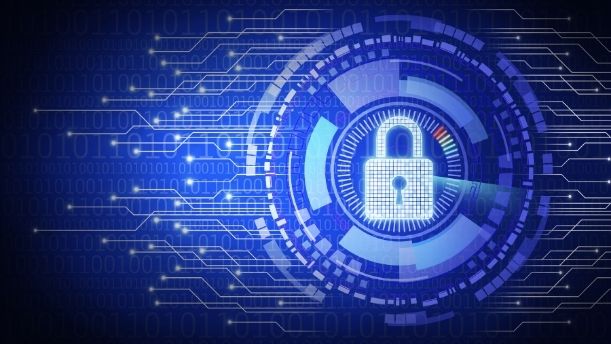More than 94% of the world’s information resides in the deep and dark webs. Only 6% is available on the surface web and accessible using the usual browsers.
It is important to understand the difference between Deep Web from Dark Web. The Deep Web is not accessible to search engines for various functional and operations reasons. This may include over 90% of the entire web. The dark web includes all sorts of information, with restricted access, but usually of great value if exploited. The data could include research, medical/financial/identity records, important defence documents or protocols to holding all kinds of illegal marketplaces for drugs, weapons, cryptocurrencies and more. The Dark Web is that part of the Deep Web that could use encryption software to make the user’s identities and IP addresses undetectable.
Thus, the most difficult-to-access part of the Deep Web is the Dark Web or the Darknet in another synonym. The anonymization in dark web leads to the predominance of malicious and criminal activities in that hidden and encrypted environment.
Various crimes and heinous actions are prevalent in the dark web to make gains through extortion, sabotaging networks, or stealing organizations’ data. On a social scale many crimes such as children pornography and pedophile networks, drugs and arms trade, human trafficking, terrorism and recruitment of extremists, planning terrorist attacks, murderers for hire, hacked digital media trade, counterfeit documents, fraud, are also reported on the dark web.
It is well known that cyber criminals are interested in databases, financial transactions, emails, identities and login credentials. Typically, hackers steal this data through phishing attacks and through use of malware. And all of this is strategized, planned and executed in the Dark Web.
Traditionally, cybersecurity investments have been largely limited to protection and prevention of IT infrastructure and perimeter defence. Monitoring the dark web does not seem urgent and immediate concern for most organizations. But in the current scenario, dark web remains to be the place from where most cyberattacks are initiated and managed. The covert operations from dark web can expose sensitive data and trade secrets to damage business beyond repair.
- Domino’s India data of 180 million orders leaked online
- Air India data breach highlights third-party risk
- Police Exam Database Exposes 500K Indian Citizens’ PII
- Covid-19 related data of thousands of Indians leaked online
Knowing where to look is the key to protecting your assets before a cyberattack occurs. And the dark web makes it highly complicated for any individual or organisation. But, organisations cannot just be content with cybersecurity protection measures for their core IT assets. As dark web becomes the root cause of cyber attacks, detection, discovery and decoding the signals will actually determine the status of every orngaisation’s security posture.
Today, a large portion of hacking includes acts of theft and threats to organized gangs, supported financially to earn profits on a large scale. Unlike the past, the hacking acts are not limited to individuals. The shift to an organized crime to achieve financial gains or meet covert political goals makes it extremely difficult to trace such acts of cyberthreats.
In terms of cybersecurity threats, hacking communities are active on Dark Web platforms, where hackers exchange experiences and share information, in addition to circulating hacking tools, malware, ransomware, breached data, and planning large-scale cyberattacks resembling a pattern of an organized crime
Organizations must now reconsider conventional methods and shift to contemporary techniques to outpace with the evolution of cyberattacks.
Cyber Threat Intelligence (CTI)
Cyber Threat Intelligence is gathering demand and increasing interest from researchers and security practitioners, and users. CTI provides evidence-based know-how about cyber threats. Considering the gained knowledge, organizations can make cybersecurity decisions, including detecting, preventing, and recovering from cyberattacks
CTI provides information related to: Who, What, Where, How, and When of cyber attacks from the dark web. CTI is expected to utilise data from multiple sources. Sources can be internal (such as network events log files, firewall logs, alerts, responses to previous incidents, the malware used for attacks, and network flows), or external (such as reports from other institutions or governments, and experts’ blogs). The CTI framework is also organised to address cybersecurity risks at various levels – strategic, tactical and operational.
CTI is a data-driven process involves several phases of collecting, processing, and analyzing the data as per the security threats perceived and experienced by the organization.
The key phases in CTI are as outlined below:
- Intelligence planning/strategy
- Data collection and aggregation
- Threat analytics
- Intelligence usage and dissemination
To understand the intelligence an organization requires, it should acquire several components, including inspecting the existing security domain, determining the current cyber threats, monitoring its cyber assets, and modeling potential directions of future threats.
The threat from dark web is persistent, advancing and ever-changing to become complex and intertwined. For cybersecurity threats from the dark web, not feeling secure is the best strategy to feel safe. Staying invested before the attacks occur can go a long way in enhancing the security of your data, assets and competitive edge.
Crafsol has the expertise to help you build and implement cyber threat intelligence that goes beyond the traditional methods of monitoring and securing your organisation to address the threats posed by dark web. Get in touch with us at connect@crafsol.com







